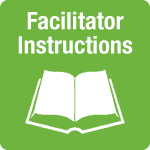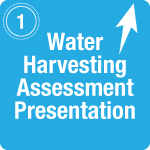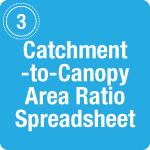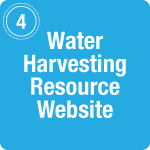The Water Harvesting Assessment Toolbox is a prototype decision aid designed to help communities in the Southwest US understand the role water harvesting can play in meeting water resource challenges while providing multiple additional benefits. It also introduces water harvesting techniques and suggests ways to implement locally appropriate water harvesting efforts. The Toolbox is intended for a wide range of users. In order to make most effective use of the Toolbox, a local facilitator should convene a varied group of community personnel (water supply management, stormwater management, transportation, planning, engineering, etc.) to go through the water harvesting assessment process together. A separate Facilitator’s Instructions document presents the five tools in the Toolbox and step-by-step instructions for using them. The link at left opens the Facilitator’s Instructions.
TOOL 1: Water Harvesting Assessment Presentation: The video presentation entitled “Guide to Assessing Rainwater and Stormwater Harvesting Potential” is a narrated, 95-slide, 54-minute video that leads users through eight steps, from general orientation to water harvesting strategies and techniques to specific water harvesting implementation options. The presentation is filled with visually appealing examples of water harvesting practices in arid and semi-arid environments, and prompts periodic discussions and real-time analysis of local water harvesting potential using the Tool 2 and Tool 3 spreadsheets.
TOOL 2: Water Harvesting Assessment Spreadsheet: This Excel spreadsheet consists of four data tables and associated charts that allow users to insert location-specific data to tabulate water resource challenges, water harvesting benefits, and future water harvesting priorities.
TOOL 3: Catchment-to-Canopy-Area Ratio Spreadsheet: This Excel spreadsheet assists users in determining the optimum ratio of water harvesting catchment area to plant-canopy area. Rainfall, evapotranspiration, and plant water demand data are provided within the spreadsheet for urban areas in the Southwest US. The formulas and analysis process can also be used for other geographic locations by inserting location-specific data.
TOOL 4: Water Harvesting Resources: This website hosts links to numerous resources and in-depth information about the water harvesting topics introduced in the Presentation. Access these resources by clicking on the numbered orange circles as indicated during the Presentation. Further water harvesting resources are available through the Desert Water Harvesting Initiative main page.
TOOL 5: Decision-Maker Presentation Template: This customizable PowerPoint presentation allows users to insert their own site-specific water harvesting assessment results, graphs, photographs, and recommendations to provide a concise and effective PowerPoint presentation for decision-makers and the public.
Questions or comments?
Please contact Susanna Eden at seden@cals.arizona.edu or see the Acknowledgements







